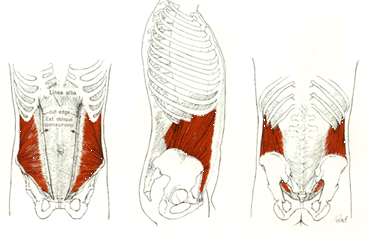 The reverse crunch emphasizes the lower portion of your main abdominal muscles (the rectus abdominis). Use caution if you’re prone to lower back discomfort.
The reverse crunch emphasizes the lower portion of your main abdominal muscles (the rectus abdominis). Use caution if you’re prone to lower back discomfort.Getting set
Lie on your back with your legs up, knees slightly bent, and feet in air. Rest your arms on the floor and place your fingertips behind your head. Rest your head on your hands, relax your shoulders, and pull in your abdominals.
The exercise
Lift your butt one or two inches off the floor so your legs lift up and a few inches backward. Hold the position for a moment, and then lower slowly. See photo A.
Do’s and don’ts
- DO keep your shoulders relaxed and down.
- DO keep the crunch movement small and precise; you don’t have to lift very high to feel this exercise working.
- DO use a minimum of leg movement.
- DON’T thrust or jerk your hips.
- DON’T involve your upper body at all.
- DON’T cross your feet at the ankles (see photo B).
- DON’T roll your hips so your buttocks and back come way off the floor. This type of movement involves your front hip muscles more than your abdominals.
Other options
Modified reverse crunch (easier): Hold onto the back edges of an exercise mat or stable object such as the underside of a couch or stuffed chair to help stabilize your upper body. Perform the reverse crunch.
One-leg reverse crunch (easier): Lift one leg at a time. Bend your other knee so your foot is flat on the floor. Avoid pushing on your foot. Use your abs to lift your hips.
Incline reverse crunch (harder): Place three risers underneath one end of a step bench and one riser underneath the other end. Lie on the step with your head at the higher end of it. Stretch your arms out behind you and hold on to the undercling of the step directly behind your head. Perform a reverse crunch by lifting your hips up. This version of the reverse crunch is more difficult because you’re working against gravity.


